Plants collected on this Expedition
| Plant ID | Accession Date | Received As | Origin | Source |
|---|---|---|---|---|
Expedition Stats
China
- Event Type
- Expedition
- Collection Type
- Germplasm, Herbarium Specimens
- Arnold Arboretum Participants
- Michael Dosmann
- Other Participants
- Anthony Aiello1, Kris Bachtell2, and Wang Kang3
- Other Institution(s)
- 1Morris Arboretum of the University of Pennsylvania, 2The Morton Arboretum, and 3Beijing Botanical Garden
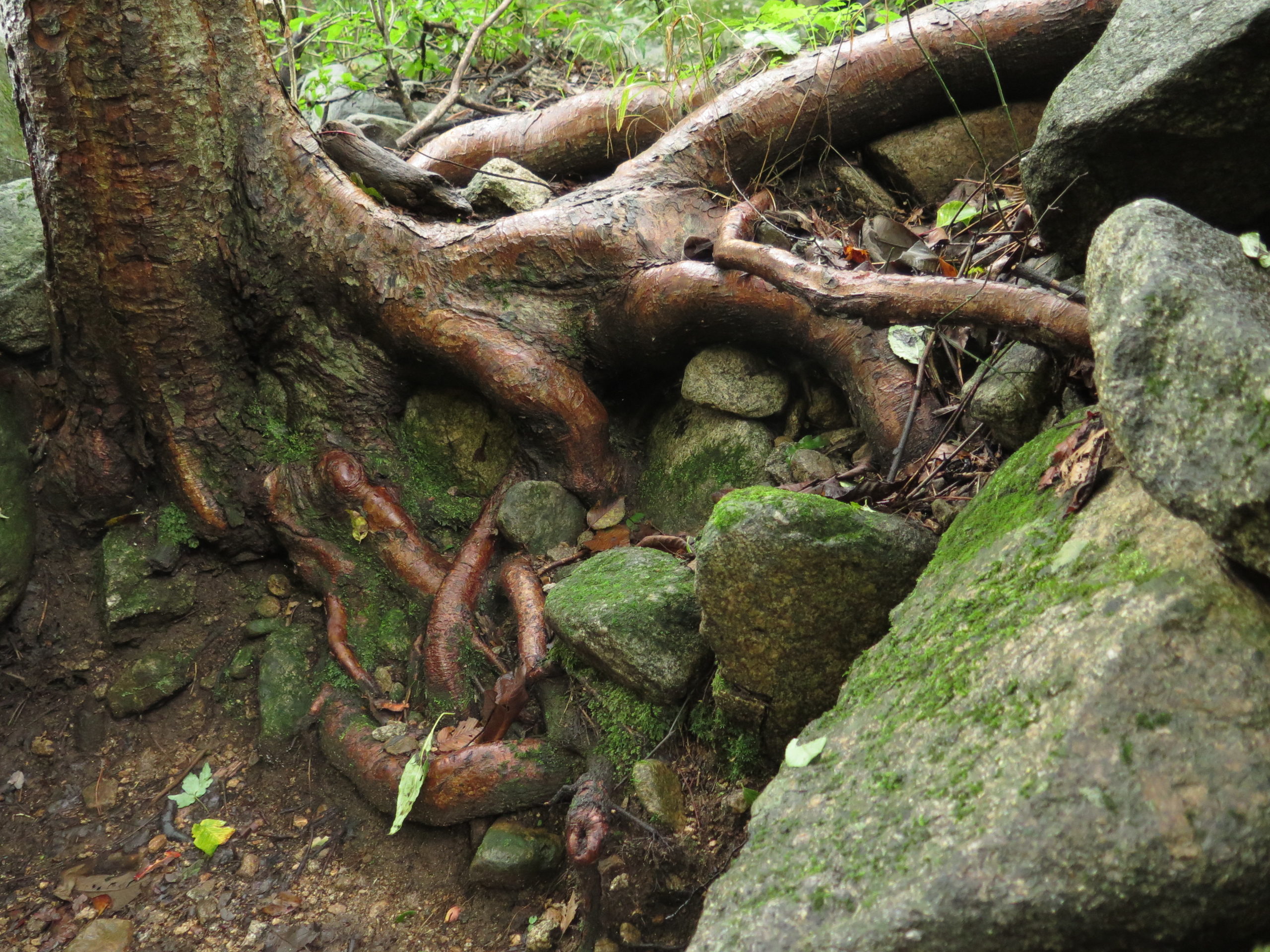
Plant explorer Ernest Henry Wilson introduced the paperbark maple (Acer griseum) from China first in 1901 for Veitch Nursery Company, and then again in 1907 for the Arnold Arboretum. Although it is well-known in gardens and arboreta; until the late 20th century, the entire pool of germplasm germplasm: in the West derived from these two introductions.
One of the main goals of the 2015 NACPEC expedition was to collect a larger genetic variety of Acer griseum seed. The few wild populations of the tree are scattered from Gansu Province in the west to Shanxi Province in the east. Because so little is known about the genetic variation within and among these different populations, the purpose of this expedition was to survey as many of the known populations as possible, sampling leaf tissues for DNA extraction and genetic characterization, and when possible, collecting seeds for ex situ conservation.
Acer griseum is highly regarded for the beauty of its habit and its cinnamon-colored, exfoliating bark that provides year-round horticultural interest. These examples from our living collections show some of these unique characteristics.
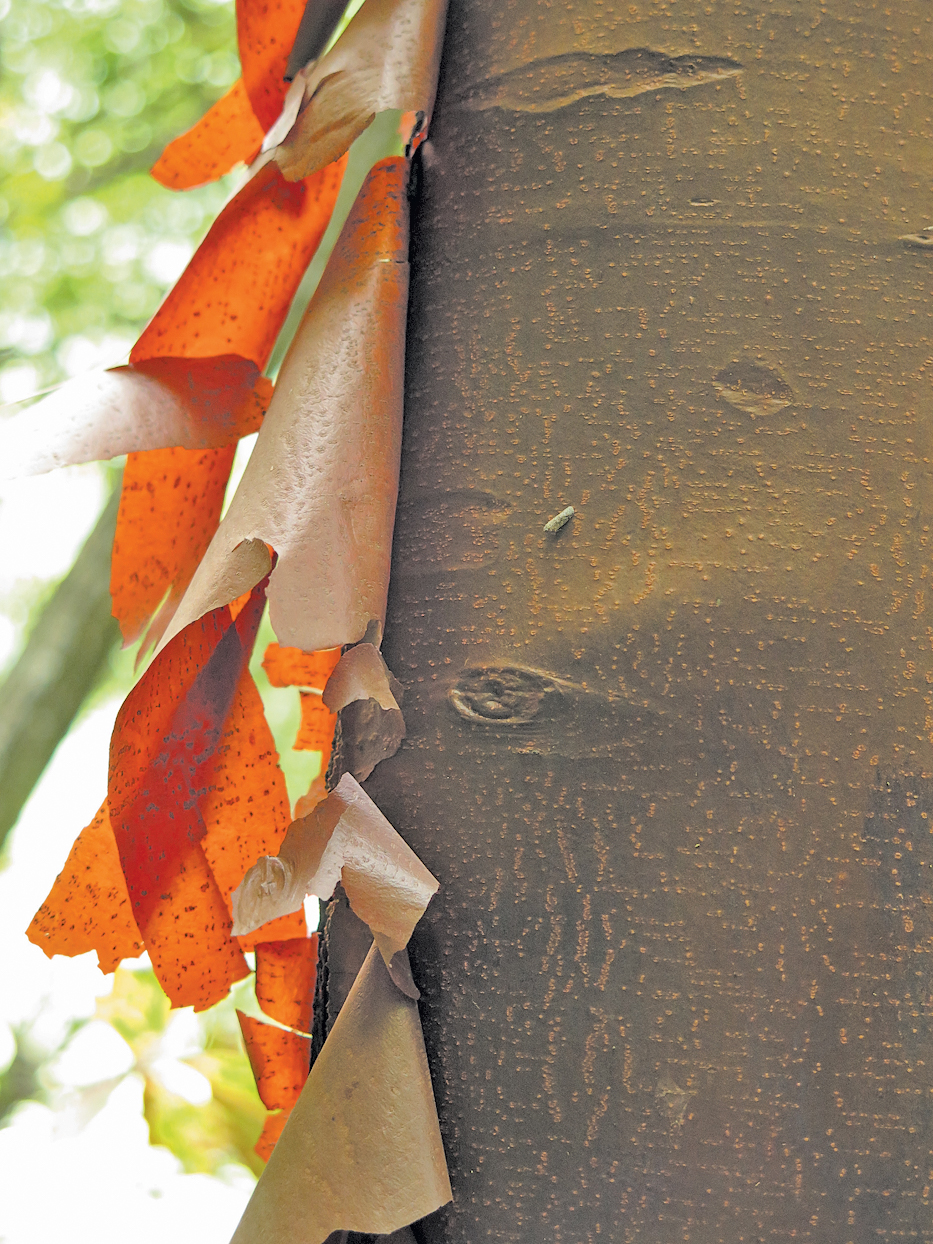


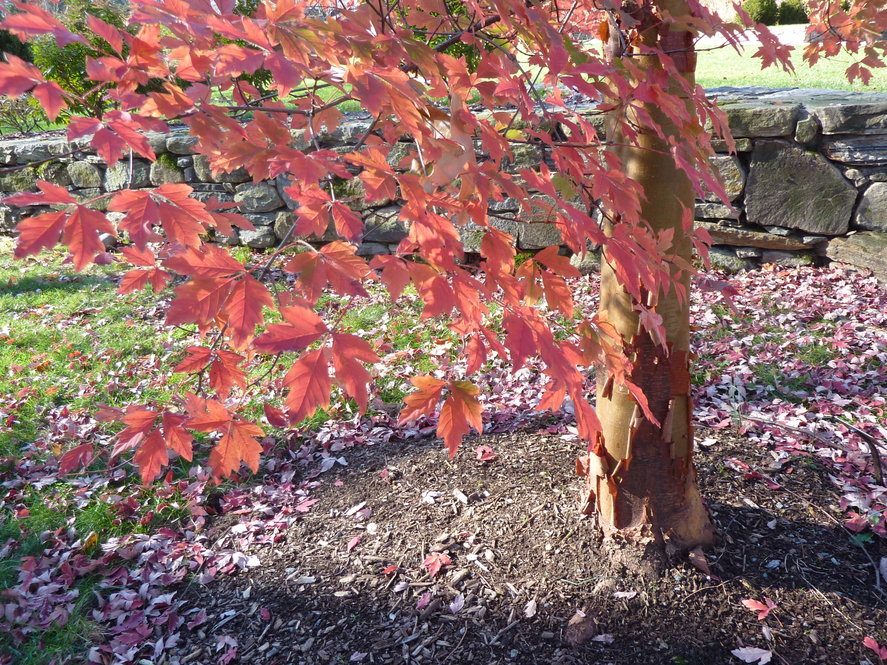
Established over 25 years ago, NACPEC came together following the success of the initial 1980 and subsequent [Sino-American Botanical Exploration] trips to China, which illustrated that there was still a great deal of plant collecting left to do in China.
Michael Dosmann
NACPEC
The North America-China Plant Exploration Consortium (NACPEC) is a collaborative effort between its member North American botanic gardens and arboreta, and Chinese counterparts, to explore, collect, and preserve endangered plants of China and North America. Expeditions collect plant material for propagation and analysis among its member institutions and others. Researchers focus on how the plants grow and adapt in diverse ecological conditions.
The Search for Acer griseum
The expedition was mounted from September 1–18, 2015. Participants included Michael Dosmann (far left) from the Arnold Arboretum, Tony Aiello (middle left) of the Morris Arboretum of the University of Pennsylvania, Kris Bachtell (middle right) of the Morton Arboretum, and Wang Kang (far right) of the Beijing Botanical Garden.




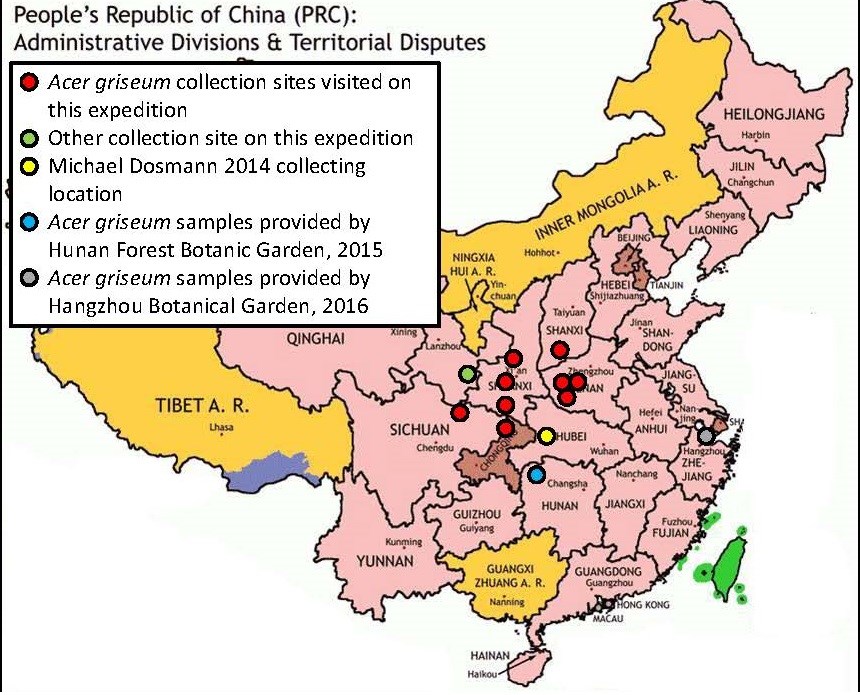
Introduction

Unlike other expeditions that may have stuck to just one geographic area, the team spent some of their time in transit in order to visit as many populations as possible during the two-week trip. Their 2,237-mile (3,600-kilometer) journey took them to nine different populations scattered across six provinces and one municipality. Typically the group spent an entire day and often part of the night driving to a new location, followed by a day or two of survey and discovery.
While some of the A. griseum populations comprised scores of individuals including newly regenerating seedlings, a number of populations were in decline and had just a few trees. On several occasions the team found that trees had been cut back or coppiced to the ground by local farmers gathering wood for fuel. Among nine wild populations, only a single tree bearing a few seeds was found. A second tree, growing at the Xi’an Botanic Garden, also bore seed.
September 3-4
The first two days of the trip were spent in transit from the United States to Beijing and then on to the city of Xi’an, capital of Shaanxi Province. On the morning of September 3 the team set off for the Hong He Gu Forest Park, about 2 hours from Xi’an. There they encountered the first A. griseum of the trip. It bore no seed but it’s leaves provided DNA and a herbarium voucher. After searching further in the valley for additional A. griseum plants and finding none, the team embarked for Tianshui, Gansu, their next collecting location, about 5 hours away.
The next morning they met Mr. Pei of the Xiao Long Shan Institute of Forestry, who would be their guide for the day. He took them to his institute and to a local temple to see some notable trees. Then it was up into the mountains in search of their quarry. After some hours of searching to no avail, the team returned to town for dinner and a well deserved rest.
September 5-6
Most of the day on September 5 was spent traveling the 280 miles (450 km) to their next target A. griseum population in Sichuan. They stopped part way to collect Fraxinus baroniana (#003) and Acer oblongum (#004) along the Jialing River, near Shuishengya, Gansu. Around 7:30 that evening the team arrived at their hotel in Jiaojiahecun near Guangwushan Park.




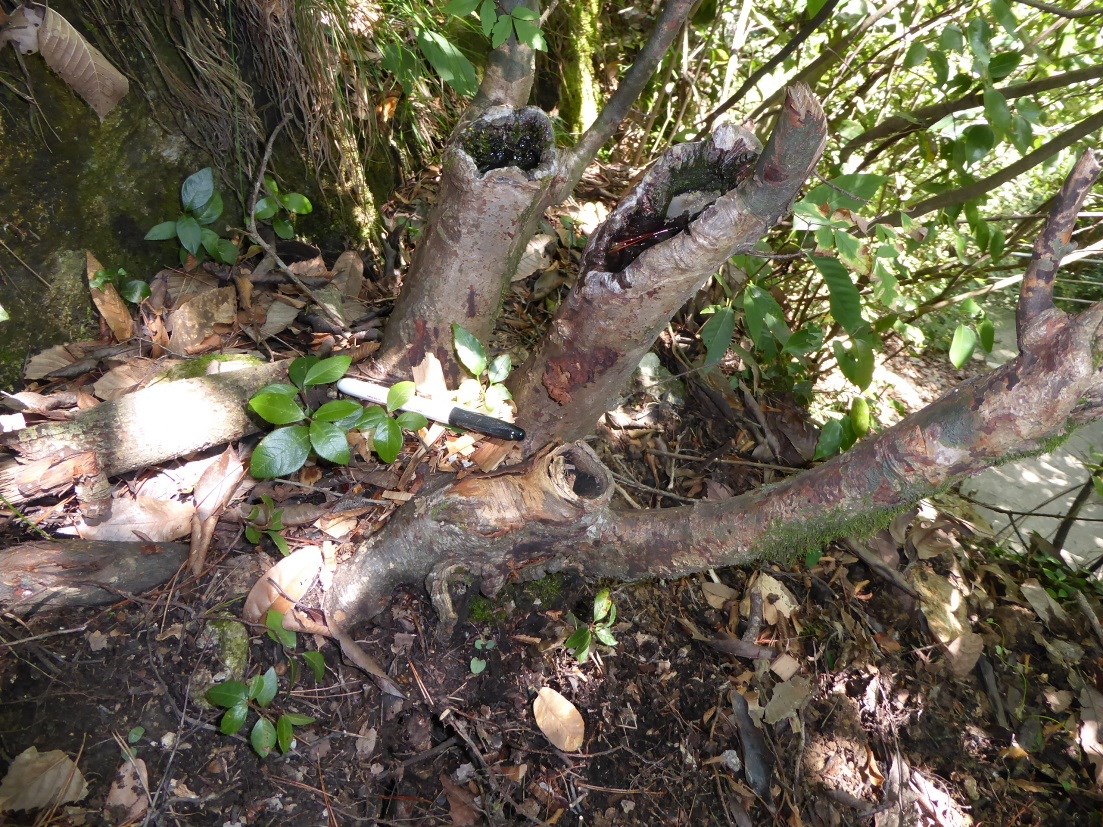
Sunday September 6 began early. The team drove up into the park and decided that they needed to get up into the higher elevations if they were going to find the illusive tree. After about 90 minutes hiking they came upon a coppiced A. griseum (#007). It did not bear any seed but specimens were collected. A bit further on they found another, again without seeds, but from which they collected specimens and DNA. Continuing their hike, Michael Dosmann saw a large A. griseum (#009) down a steep slope. Their pole pruners were too short to reach but they were able to cut off a branch for DNA and specimens with a pocket chainsaw.
The area around public toilets have in the past been successful hunting grounds for NACPEC collections and this day was no exception. Near a trail toilet they found two large A. griseum, one of which bore seed (#010). Collections were made from it and others (#011, #012) in the vicinity. The team made their way back to their car, down from the high elevations and returned to their hotel for dinner. Then it was on to Nanzheng, Shaanxi for the night.
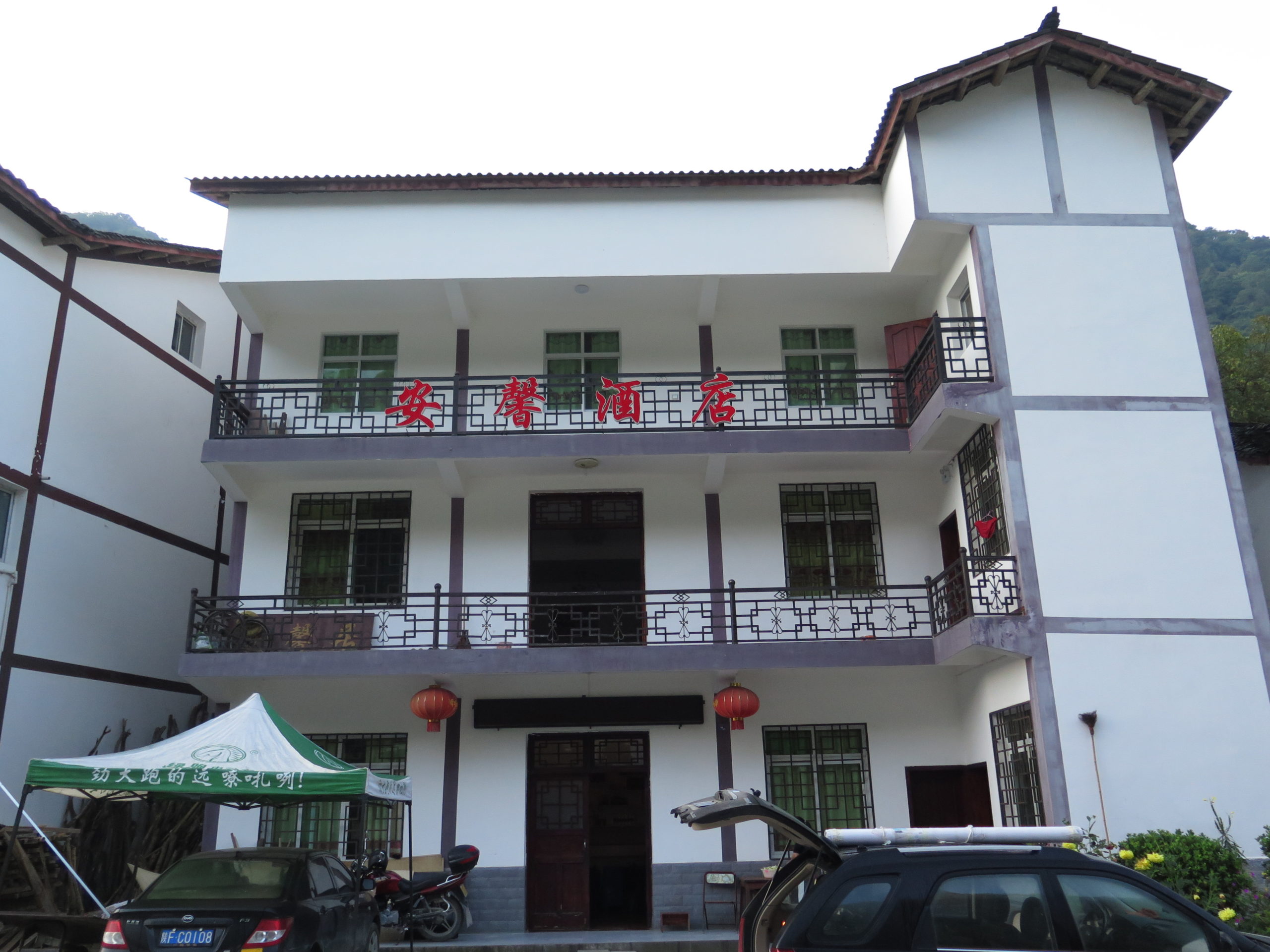



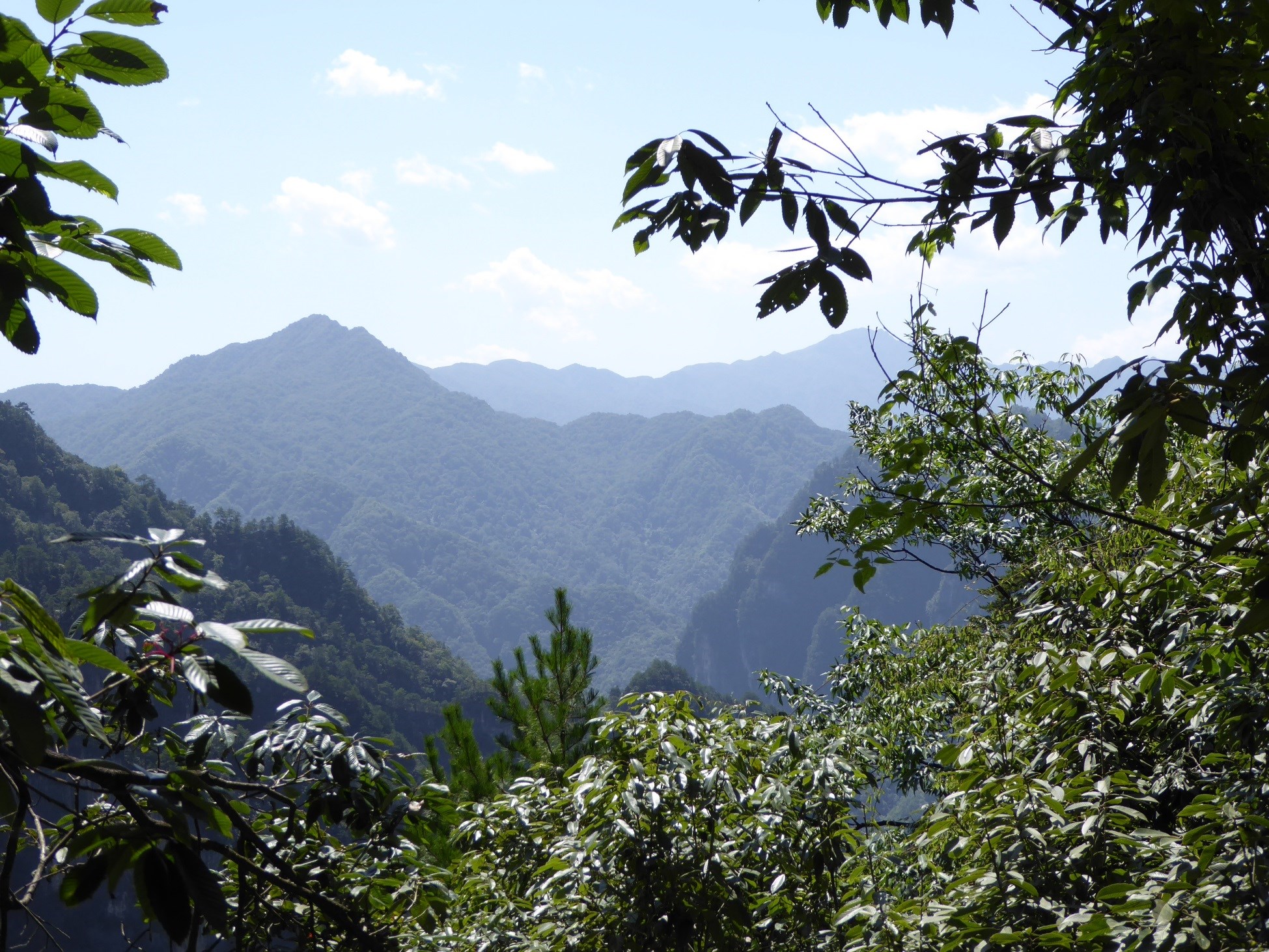




September 7-8
The team spent September 7 in transit to Gaunanzhen, Chongqing Municipality, the area where Père Paul Farges found the type type: A. griseum in 1892. On arriving at their hotel in the afternoon, they cleaned seeds and relaxed.
The next morning the team made an early start for the mountains. For this population of A. griseum they had GPS coordinates but they were not exact, so they would need to search a broad area. The first valley they ascended did not have any A. griseum so they came back down to the town and asked the residents whether they knew where they might find the trees growing. Mr. Xia, a local farmer, told them he had some growing on his land and took them up a steep slope to see them.
There they found a population of over 20 trees, all of a similar size from which they took specimens and DNA. Unfortunately though none were in fruit! They left the town in the late afternoon and arrived in Angkang, Shaanxi late that evening.
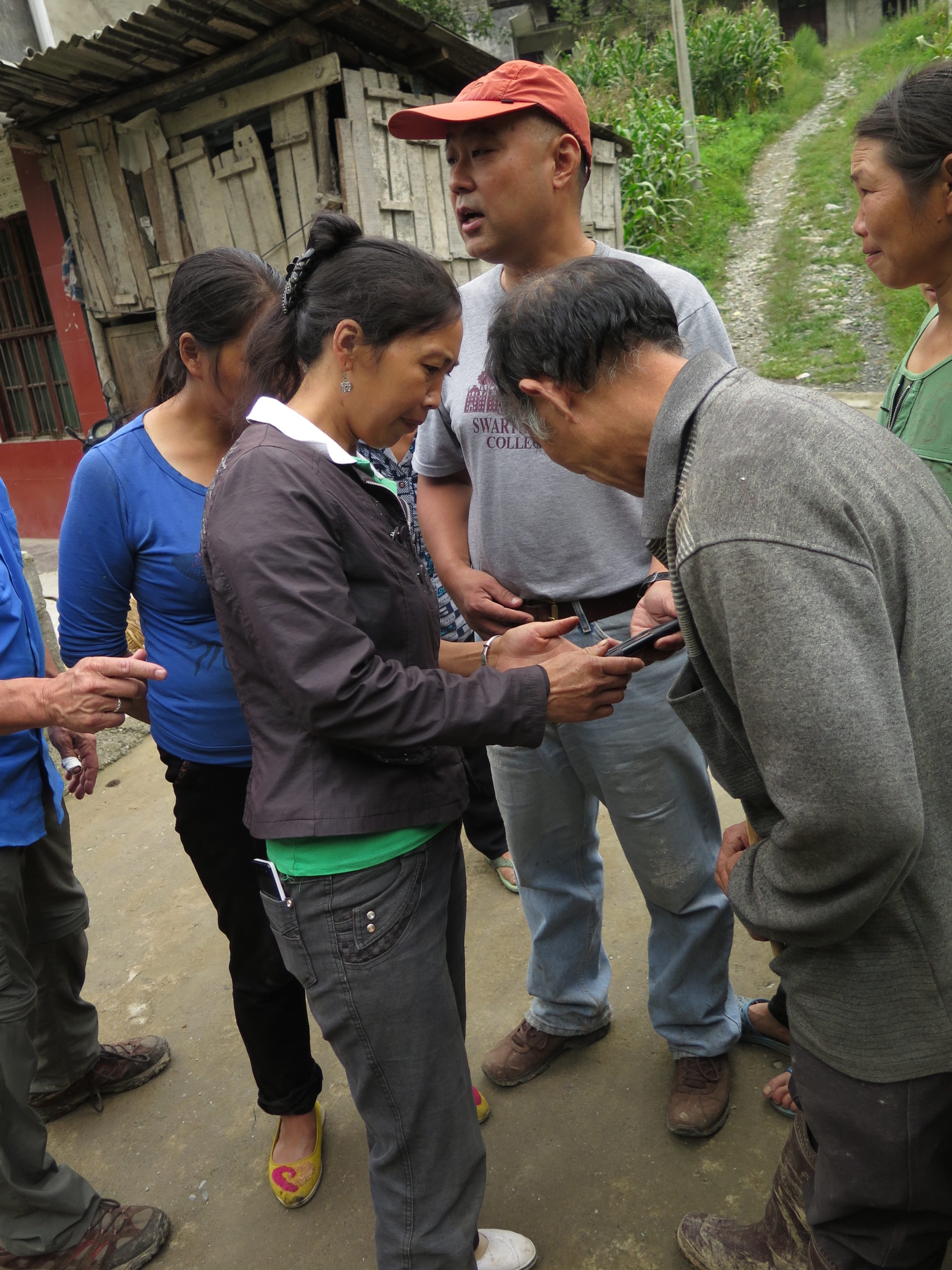



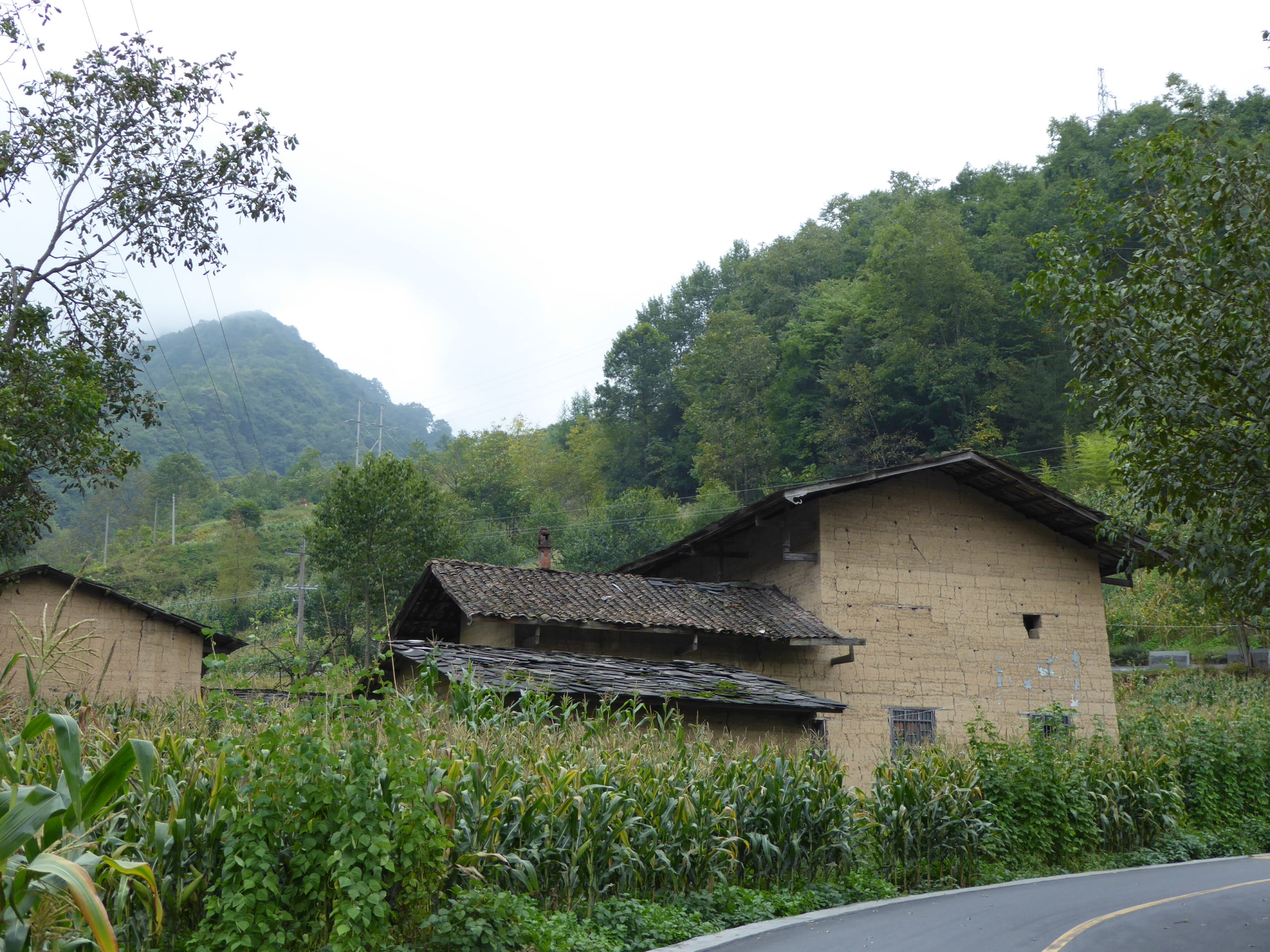
September 9-10
Wednesday September 9 started early with a drive to the Baixian Forest Station in the village of Long Shan Cun, Shaanxi. In 1995, NACPEC botanists made a collection from an A. griseum (#036) there and the team planned a follow up. They quickly found the tree. It measured 33 inches (84 cm) diameter at breast height. It was in fruit but because it was so large they could not reach any of the seeds with their pole pruners or pocket chainsaw and had to content themselves with a voucher and DNA collections. In the same area they also discovered a huge Corylus fargesii (#038) that was in fruit, the largest example of this tree that any of the team had ever seen. They returned to Angkang for the night.
Thursday the 10th was spent in transit from Angkang, through western Hubei Province (near Wudang Shan and Shennongjia, sites of other NACPEC expeditions), and on to Bao Tian Man Park, Henan Province.





September 11-12
The Bao Tian Man Nature Reserve held the largest collection of A. griseum found thus far in the expedition. The team found hundreds of individuals however to their disappointment, none of them were in fruit. They made 17 collections for vouchers and DNA from trees however, some of which had diameters up to 20 inches (50 centimeters). A delighted Kris Bachtell found an example of East Asian orixa (Orixa japonica) (#044) in fruit, making a collection of that as well. The team then returned to their hotel to for dinner and to clean seeds.
They spent Saturday the 12th also collecting in Bao Tian Man Nature Reserve. The team had a lead on another population of A. griseum and struck out in the morning to find them. While traversing a narrow track, their car got a flat tire, delaying progress for an hour while the tire was changed. The team found the trees nearby, again none were in fruit, but they made contact with a local farmer who said he would keep watch for seeds in the future. In the late afternoon, they made their way out of the forest and crossed into Luan Chuan County, Henan, and towards the town of Luan Chuan. There they attempted to get a hotel for the night but because the county is closed to westerners they were escorted by away the police and directed to the town of Luoyang. After two more hours on the road, they reached their destination and their night’s accommodations.
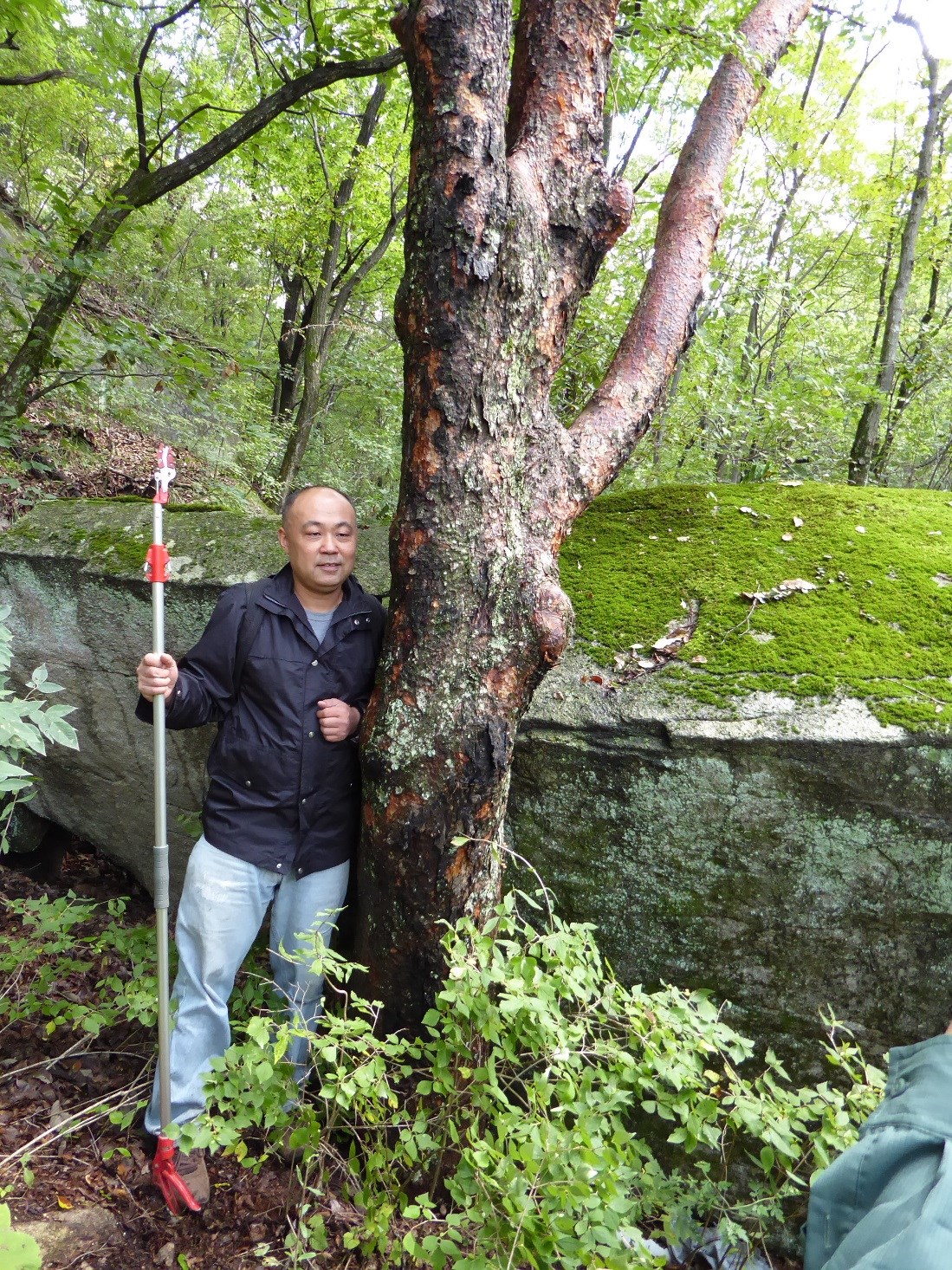




September 13-14
The next day would be spent primarily in transit again but before they left Luoyang, they visited the Luoyang Botanical Garden to see the mass tree plantings. Then it was on to Shanxi Province and the city of Yangcheng. No collections were made that day but they did some ‘housekeeping’ of the plant materials they already collected, including changing out the packets of silica gel used for drying the leaves for DNA collection.
Their final day in the field, Monday September 14 was at the Manghe Nature Preserve. The 2002 NACPEC expedition found A. griseum near the preserve but were barred from entry because they were foreigners. The 2015 expedition could enter the area and hoped to find the trees. After a tram ride into the preserve the team set off on foot. After reconnoitering at the dumpling stand, they were led to a tree on a cliff face. They made a collection but soon were surrounded by security officers who directed them back to the dumpling stand. Wang Kang made a few more collections but the Americans could not proceed any further. Again, the trees they found were not in fruit as were most of the wild specimens from elsewhere. The team had a lunch of dumplings and headed back to their hotel.
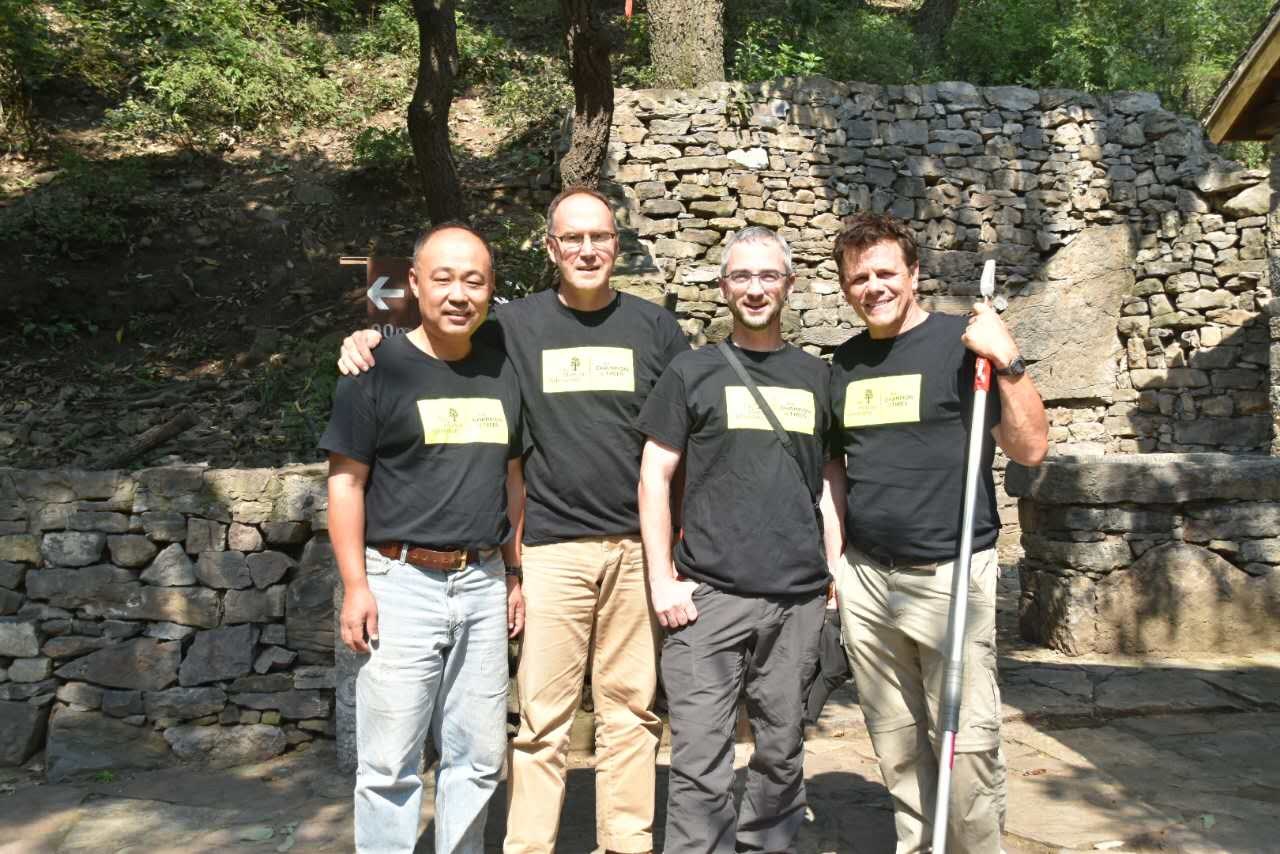



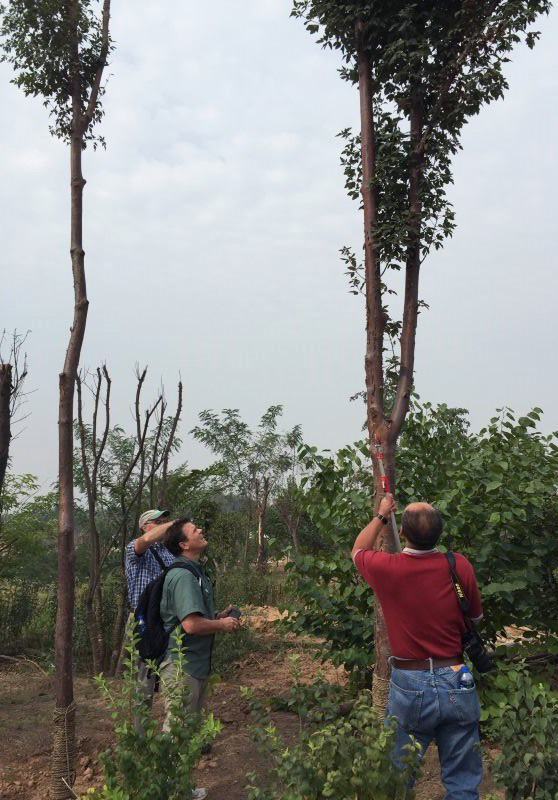
September 15-16
The team spent Tuesday in transit back to Xi’an, arriving in the late afternoon. They headed out for a noodle dinner and a rest from all the driving.
Wednesday, September 16 was spent at the Xi’an Botanical Garden. Mrs. Li Yan took then to the adjacent nursery to see and collect from their A. griseum trees (#072, #073) that had been gathered from the wild in the region. The first tree was in fruit and they collected a large number of seeds. They returned to the garden itself, examined plans for growing the garden over the next several years, and enjoyed a walk around the grounds. Once back in their hotel they clean the rest of their seed and prepared their collections for shipment.
September 17-18
The team spent Thursday morning sorting and organizing their collections. After lunch they did some sightseeing, visiting the Little Goose Pagoda and then wandering the bazaar. They shared a parting meal before making their preparations for departure the next day.
Michael Dosmann was staying in China for another several weeks and had a very early departure for the Huanglong Nature Reserve near Songpan, Sichuan. Tony Aiello and Kris Bachtell returned to the United States and Wang Kang to Beijing, bringing their quest for Acer griseum to a close.
Back in Boston

In addition to herbarium, DNA, and seed collections of Acer griseum (66 trees sampled in total), the travelers made seven collections of other plants spotted in close proximity to the maples. Among these was the impressive specimen of the paperbark filbert (Corylus fargesii), which stood some 80 feet (24 meters) tall.
Dig Deeper
Learn about the Arboretum’s Acer griseum collection in Plant Bios: Paperbark Maple Acer griseum
Read Michael Dosmann’s thoughts on NACPEC in “A partnership for plants.”
Peter Del Tredici profiled the Arboretum’s Acer griseum collection in his 2007 article, “The Paperbark Maple—One Hundred Years Later.”
Paul Meyer details his adventures collecting and then growing paperbark maple in this Arnoldia article.

